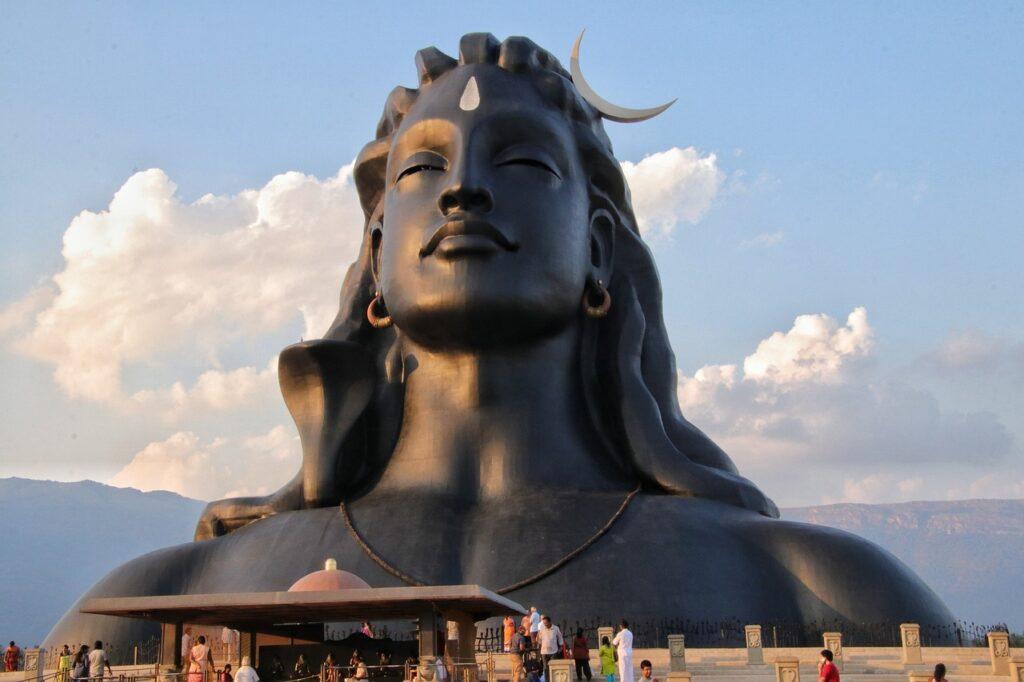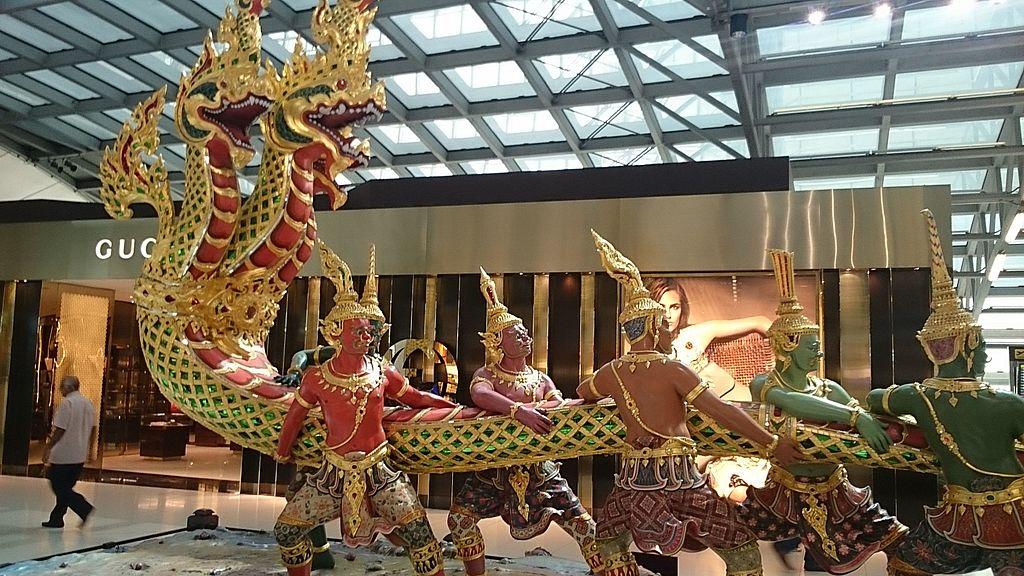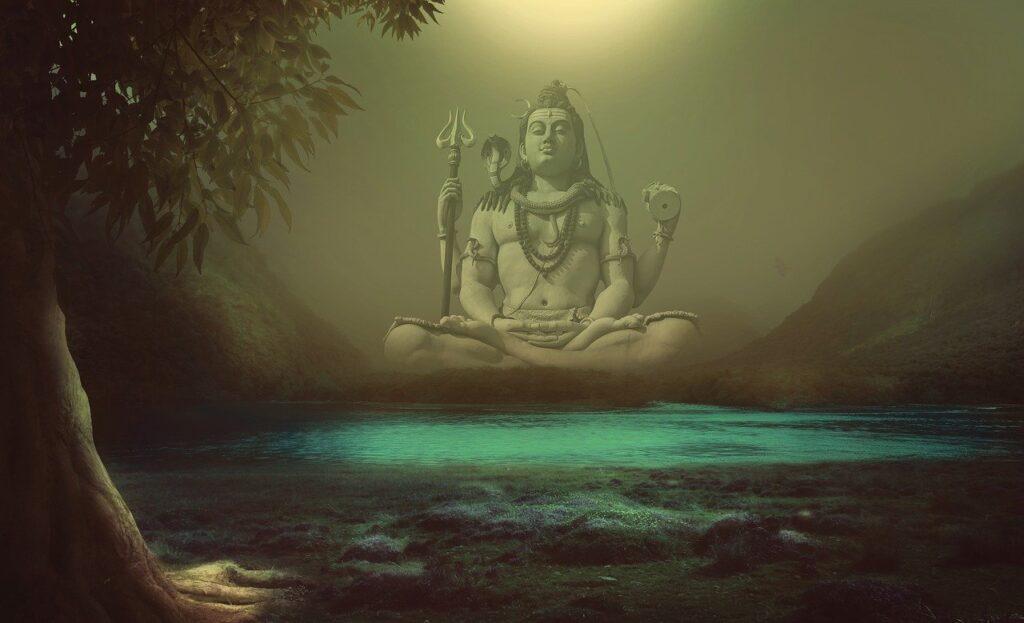
Once, the sage Durvasa encountered the demigod Indra, the king of heavens, and greeted him with a marigold garland. However, Indra, filled with pride, ignored the sage and placed the garland on his white elephant, Airavat, which promptly discarded and trampled it. Enraged, Durvasa cursed Indra to lose all his opulence. Shortly after, demons attacked and defeated the demigods, resulting in many casualties. Despite the efforts of sages, they couldn’t revive the fallen demigods. Following Lord Brahma’s advice, the demigods went to the boundary of Svetadvipa, offered prayers to Lord Vishnu, and He appeared in a blinding effulgence, visible only to Brahma. Lord Vishnu suggested that the demigods and demons collaborate to churn the Milk Ocean for the nectar of immortality, with Mandara Mountain as the churning rod and the serpent Vasuki as the rope. He warned the demigods not to be greedy for other treasures and to remain calm even if the demons claimed them. Amid this epic saga, Shiva’s selflessness shines when he drinks poison to save the world.
Samudra Manthan – Churning of the Milk Ocean
Lord Indra and Bali Maharaja, the demon king, agreed to a truce for the purpose of churning the ocean and sharing the resulting nectar between demigods and demons. Bali Maharaja, a disciple of Shukracharya and the grandson of Prahlada Maharaja, a devoted follower of Lord Vishnu, accepted the deal, secretly planning to take the nectar from the weakened demigods later. During the churning, some demons and demigods lost their lives while attempting to lift the Mandara mountain. Lord Vishnu revived them with His gaze and effortlessly moved the mountain near the Milk Ocean. The serpent Vasuki served as the rope, with demons holding its hood and demigods gripping its tail. However, the mountain started sinking into the ocean due to lack of support, causing frustration. To assist in the churning, Lord Sri Hari took on the form of Kurma avatar (tortoise incarnation) and lifted the massive mountain on His back, which was a hundred yojanas wide. Remarkably, the Lord hardly felt any discomfort; it was like a mere itch to Him.

Samudra Manthan produces Poison (Halahala)
The demigods and demons struggled to churn the Milk Ocean, but when they grew frustrated, Lord Vishnu himself took over. He appeared as a dark cloud, dressed in yellow garments with lightning-like earrings and a flower garland. With his strong, fearless arms, he held Vasuki and used Mandara Mountain as a churning rod. The ocean became turbulent, and even large aquatic creatures like whales and crocodiles surfaced.

During the churning, a deadly poison called halahala emerged. In fear of its spread, the demigods, including Lord Vishnu, sought refuge in Lord Shiva (Sada Shiva). This might raise the question of why Lord Vishnu, the Supreme Lord, didn’t intervene directly. According to Srila Madhvacharya, Lord Vishnu could have solved the problem himself but chose to give credit to Lord Shiva, who later drank the poison and held it in his throat.
Shiva saves the world consuming Poison
The demigods, including Brahma and Indra, praised and glorified Lord Shiva, beseeching him to protect them and the world from the deadly poison emerging from the churning of the Milk Ocean. Lord Shiva, seated on Mount Kailash with his wife Bhavani, felt it was his duty to protect all living beings in distress. He explained to Bhavani that it was the responsibility of the master to safeguard suffering dependents. Despite people’s conflicts, devotees strive to save others, even risking their own lives. When benevolent actions are performed for others, it pleases Lord Hari, and when the Lord is pleased, all living creatures benefit. Therefore, Lord Shiva decided to drink the poison to ensure the happiness of all beings.
After seeking Bhavani’s consent, Lord Shiva compassionately took the entire quantity of poison in his palm and consumed it. The poison left a bluish mark on his neck, which is now considered an ornament and why Lord Shiva is known as “Nilkantha” or one with a bluish neck.

This act exemplifies how great personalities willingly endure suffering for the welfare of others, as it is the highest form of worshiping the Supreme Personality of Godhead, who resides in everyone’s heart. Such selflessness is a hallmark of a Vaisnava, and Lord Shiva is celebrated as the foremost among them (vaishnavanam yatha sambhuh).